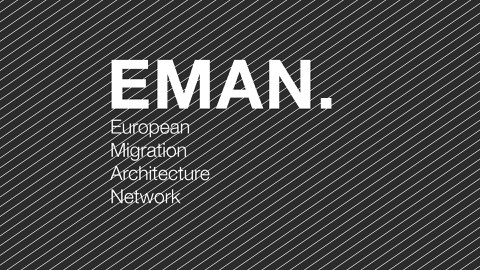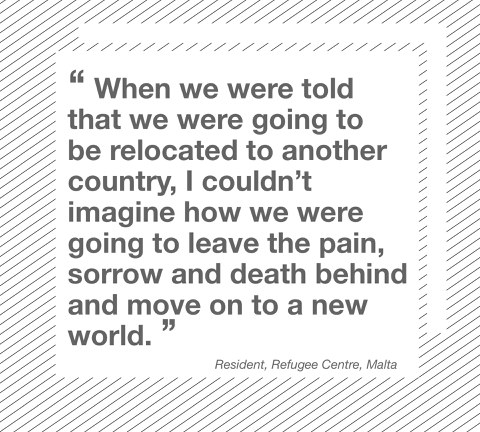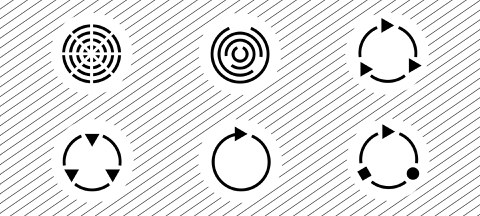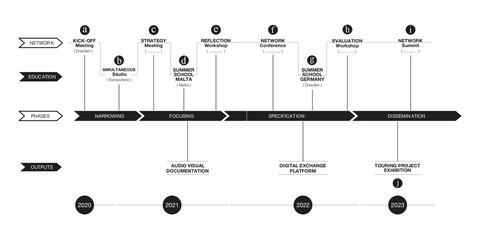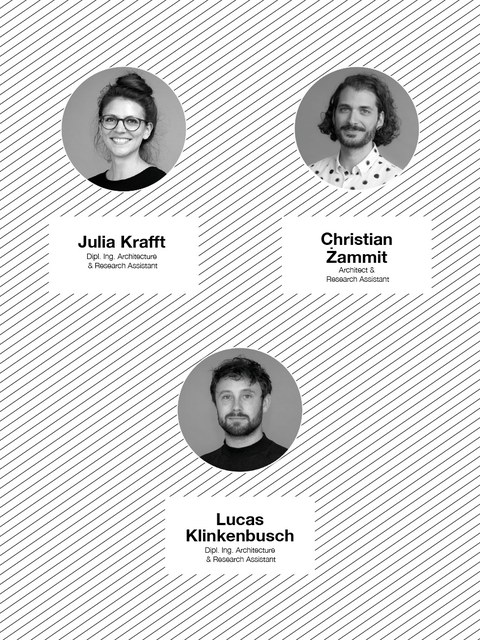EMAN. European Migration Architecture Network
Introduction
Migration and displacement of people is a current task which Europe and the EU will need to tackle for the foreseeable decades. So far, neither legal nor social agreements on the responsibilities arising from this were set.
Widely recognised as a problematic issue, the theme of migration has the potential to be a catalyst for progressive social development. Even though this task must be carried out at all levels of the civic society, architects; as an active and forming part of the european society, need to act as mediators and translators between different parties and fields.
In recent years; particularly since the „refugee crisis“ of 2015, more and more research and teaching areas with precisely this focus have emerged at various architecture faculties around Europe. However, the networking, coordination and sharing of knowledge of these different approaches is inefficient. In particular, the direct link to European policy, NGOs and local organisations seems to be a neglected important field of action. Effective solutions must be found in cooperation with partners from the EU and worldwide. In addition to a common vision, the greatest focus must be on the development of a strong and capable network.
Architecture and displacement
According to the United Nations Organization (UNO) 70,8 million people from all over the world are fleeing for various reasons. Recent studies show that due to climate change this number will increase dramatically during the next decades. The main part of the refugees worldwide are forced to leave their homes because of extreme weather conditions related to climatic changes.
A main contributor to this climatic change is the building industry which through the erection and the preservation of structures is causing a third of the CO2-Emissions worldwide. The project’s objective is to turn this important role from that of a ‘perpetrator’, to a positive actor and creative force promoting change. The built environment cannot be only considered a sedentary agent of spatial and conceptual framework. It needs to actively influence the emergence of networks and collaborations both within and outside of the field. The function of architecture is not only to give shelter or provide space. Architecture can also act as a medium to build a base for the whole process of migration through its connected functions.
Why Dresden?
DRESDEN (554,649 inhabitants) is the capital of the German state of Saxony and is known for its cultural and educational significance. Alone, often international, students and university workers make up over a tenth of the city‘s population. A large number of technology companies from different countries are located in the urban area and ensure relative prosperity, which is rather unusual in eastern Germany. But Dresden is also a place of social division and confrontations, a platform for a reinterpretation of human dignity and the center of numerous internationally recognized racist incidents.
Although the Faculty of Architecture at TU Dresden has various projects with humanitarian or migration-related relevance, there is a lack of a targeted, sustainable and above all practice-oriented debate.
Particularly in view of the current day-to-day politics, as well as right-wing extremist and racist developments, we feel that Dresden as a location and the TU as an institution is obliged to proactively address these problems.
Network
Specific and active networking for interdisciplinary co-working
One main idea of EMAN. is to constantly build up and expand an international network of actors, which are already involved in this field or are working on various individual problems. Thus, the project needs to identify suitable partners, which add value to the network.
For an active connection of participants, EMAN. and the strategic partners will organize events and activities, engaging them via the platform and promoting specific collaborations. Skills that are developed by the network get applied and tested beyond the network itself. This will enable a more efficient way of finding solutions to existing critical problems while preventing undesirable developments. With these newly acquired tools the project will establish methods to implement the strategies in various fields of teaching and research, collaborative initiatives and others.
Main objectives
Key objective 1 is to set a general recognition and acceptance of migration as a more permanent part of the civic structure and an opportunity for further development. Additionally it is necessary to support integration by establishing better conditions for the process itself, as well as improving the spatial, political and social framework. The project establishes a more positive definition to migration as far as a common understanding of a global change with new and improved possibilities for everyone. Speaking about migrants as a separate group of people builds a wall in society. Defining an inclusive system is the first step to a successful solution. The project part in creating the base for a common civic interaction with migration in a European context.
As Key objective 2 the project sees to contribute to the objective in renewing the definition of architecture and the built environment. The actors in the planning and building sector should participate in a creative process for public interests and the common good. Profit-oriented aspirations, accelerated by individual gain is no base for a merging society. The role of the designer needs to change; or better, evolve towards open minded mediators between various stakeholders and fields.
For Key objective 3, the project evolves constantly and expands to a network with a wide range of international actors and participants. Through the collaboration of the strategic partners, a database of (international) actors and organisations will be developed as an initial analysis. On one hand this will be a collection of existing practices and solutions, while on the other hand it will highlight required actions and approaches. In addition to this, research within the fields of spatial, social and political contexts will be carried out. In order to find the best working solutions, one needs to understand the underlying problems while trying to formulate sustainable and long lasting systems.
Steps
Networking of institutions and initiatives working in the context of migration and structural social change in order to create an international network.
Analysis of the existing problem frameworks in connection with the social, spatial and political context.
Development of strategies for the preventive avoidance of current and past trouble areas.
Implementation of the generated knowledge in formats of university education and research as well as in the direct work of participating initiatives.
Solution to acute and concrete problems in the context of migration through education and the application of skills generated in the network.
Transformation of the predominantly negatively connotation of migration into a common social vision.
Timeline
a. Kick-off
A first encounter sets the mark for the official start of EMAN. The strategic partners meet in full to coordinate resources, allocate tasks and agree on a timeline. The TU Dresden, in its role as host institution, will bring together all partners in order to define feasible fields of activity and possibilities. The event will provide all strategic partners with an overview of the project and the individual tasks to be carried out. One item on the agenda will be the choice of topics for the following Simultaneous Studios.
b. Simultaneous studios
An introductory workshop/studio devised by every institution under the cap of one theme which will outline the base for the following summer school. To create a representative number of results every partner fits a defined task into an already existing module in his curriculum to be dealt with by students. Even though every partner performs the module locally at their faculty, it is envisaged that all workshops will happen during the same period of time. After the release of all final results, they will be collected and prepared as working material for the following strategy meeting.
c. Strategy meeting
A network meeting happening at one particular institution to discuss the outcomes of the simultaneous studios and reinforcing ideas for the next events. This event is a first review and presentation of the work in progress from the different partners. The acquired knowledge and results of the previous studios will be discussed and analysed. Main objective of this workshop is to find and address essential fields of work to be tackled during the following summer school.
d. Summer school Malta
A practical and theoretical training program for students to co-create an experimental foundation of innovative ideas and possible solutions. This pilot event in Malta is a hands-on intensive study program that can bridge the gap found in architectural education between theory and building practice. International students gain valuable practical experience together by looking at problematic and potential areas in Malta as a test field. They will do this by analysing connections, finding missing resources and provoking new development processes. By networking with like-minded and interdisciplinary actors, divergent skills and knowledge can be exchanged. Through the theoretical input of local actors and international experts, they are to be inspired throughout the design process and exchange views on problems and content-related positions in the community.
e. Reflection workshop
A time to take a step back and take a look at what has been done so far. After testing a couple of different strategies and concepts, this workshop will give the network partners the opportunity to assess the quality and efficacy of the applied educational methods. The gathered data will be processed and put into accessible modules. As a product of this workshop, a presentation of the progress for the Network Conference is planned.
f. Network conference
An open invitation to all actors in the field of migration. The main objectives of this conference are to get an overview of the current situation in the EU and worldwide, to exchange information and to establish new links. To strengthen and consolidate the exchange of knowledge, the conference will present a digital platform through which partners can share their work with others.
g. Summer school Germany
Implementation of the developed practical and theoretical programme for students. Based on the different approaches of teaching methods and the diverse results from the Simultaneous Studios of all participating partner universities, this event is an further development of the Summer School Malta 2021. As the final implementation of the newly developed methodology, new insights and interdisciplinary practice methods from the growing network will be presented to the students.
h. Evaluation workshop
An adaptable module for interdisciplinary intensive courses. Starting with an assessment of value and impact of the previously tested methods this workshop aims to create a prototype module. The approach of different professions and actors will be combined with the implementation of democratic design. This allows a well funded output of the correlated knowledge of all participants.
i. Network summit
A closing summit for all participants of EMAN. To take full advantage of the created network this concluding conference aims to bring together all parties involved in EMAN. together with those who are active within the realm of migration in Europe. In light of the forthcoming end of the funding period, the summit opens the opportunity for future collaborations, projects and other partnerships. Furthermore, this meeting provides the appropriate space for finalising and presenting the main results of EMAN.
j. Exhibition
An exhibition to show and spread the results of EMAN. The touring exhibition is of great importance for the public perception and the positive effects of the entire EMAN project. In order to act not only in an academic environment, the content and progress of the project will be visualized in an exhibition to present it to a wide range of people in public places. To this end, the exhibition will be held in each partner country after the end of the funding period.

